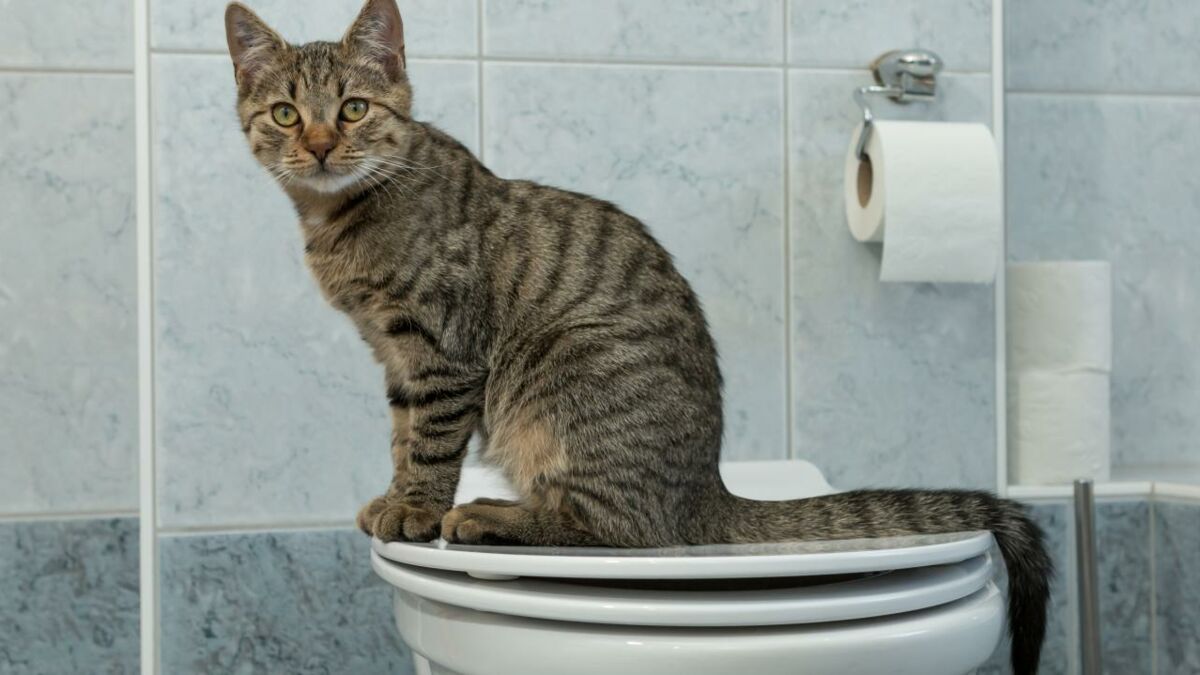Reasons Flushing Cat Poop Down Your Toilet Is Harmful - Tips for Proper Handling
Reasons Flushing Cat Poop Down Your Toilet Is Harmful - Tips for Proper Handling
Blog Article
What're your thoughts about Can You Flush Cat Poo or Litter Down the Toilet??

Intro
As pet cat owners, it's necessary to be mindful of how we throw away our feline close friends' waste. While it might seem practical to purge feline poop down the toilet, this practice can have harmful repercussions for both the environment and human health.
Environmental Impact
Flushing cat poop introduces hazardous virus and bloodsuckers into the water supply, presenting a significant threat to water communities. These contaminants can adversely impact aquatic life and concession water quality.
Health and wellness Risks
Along with ecological problems, flushing cat waste can additionally posture health and wellness threats to human beings. Feline feces might consist of Toxoplasma gondii, a bloodsucker that can create toxoplasmosis-- a potentially extreme disease, specifically for expecting females and individuals with weakened immune systems.
Alternatives to Flushing
Fortunately, there are more secure and much more accountable ways to deal with pet cat poop. Take into consideration the complying with choices:
1. Scoop and Dispose in Trash
The most usual method of taking care of cat poop is to scoop it into a biodegradable bag and toss it in the trash. Make certain to utilize a specialized trash inside story and take care of the waste without delay.
2. Use Biodegradable Litter
Opt for naturally degradable cat clutter made from products such as corn or wheat. These litters are environmentally friendly and can be safely taken care of in the garbage.
3. Bury in the Yard
If you have a yard, think about burying pet cat waste in a marked location far from vegetable gardens and water resources. Be sure to dig deep sufficient to avoid contamination of groundwater.
4. Install a Pet Waste Disposal System
Buy a pet garbage disposal system especially created for feline waste. These systems use enzymes to break down the waste, reducing odor and environmental influence.
Final thought
Accountable pet possession expands beyond giving food and sanctuary-- it also entails appropriate waste monitoring. By refraining from flushing pet cat poop down the bathroom and choosing different disposal methods, we can decrease our ecological impact and safeguard human health and wellness.
Why Can’t I Flush Cat Poop?
It Spreads a Parasite
Cats are frequently infected with a parasite called toxoplasma gondii. The parasite causes an infection called toxoplasmosis. It is usually harmless to cats. The parasite only uses cat poop as a host for its eggs. Otherwise, the cat’s immune system usually keeps the infection at low enough levels to maintain its own health. But it does not stop the develop of eggs. These eggs are tiny and surprisingly tough. They may survive for a year before they begin to grow. But that’s the problem.
Our wastewater system is not designed to deal with toxoplasmosis eggs. Instead, most eggs will flush from your toilet into sewers and wastewater management plants. After the sewage is treated for many other harmful things in it, it is typically released into local rivers, lakes, or oceans. Here, the toxoplasmosis eggs can find new hosts, including starfish, crabs, otters, and many other wildlife. For many, this is a significant risk to their health. Toxoplasmosis can also end up infecting water sources that are important for agriculture, which means our deer, pigs, and sheep can get infected too.
Is There Risk to Humans?
There can be a risk to human life from flushing cat poop down the toilet. If you do so, the parasites from your cat’s poop can end up in shellfish, game animals, or livestock. If this meat is then served raw or undercooked, the people who eat it can get sick.
In fact, according to the CDC, 40 million people in the United States are infected with toxoplasma gondii. They get it from exposure to infected seafood, or from some kind of cat poop contamination, like drinking from a stream that is contaminated or touching anything that has come into contact with cat poop. That includes just cleaning a cat litter box.
Most people who get infected with these parasites will not develop any symptoms. However, for pregnant women or for those with compromised immune systems, the parasite can cause severe health problems.
How to Handle Cat Poop
The best way to handle cat poop is actually to clean the box more often. The eggs that the parasite sheds will not become active until one to five days after the cat poops. That means that if you clean daily, you’re much less likely to come into direct contact with infectious eggs.
That said, always dispose of cat poop in the garbage and not down the toilet. Wash your hands before and after you clean the litter box, and bring the bag of poop right outside to your garbage bins.
https://trenchlesssolutionsusa.com/why-cant-i-flush-cat-poop/

As a keen reader about How to Dispose of Cat Poop and Litter Without Plastic Bags, I was thinking sharing that piece of content was a good idea. Sharing is caring. You just don't know, you might be doing someone a favor. I recognize the value of reading our article about How to Dispose of Cat Poop and Litter Without Plastic Bags.
This Resource Report this page